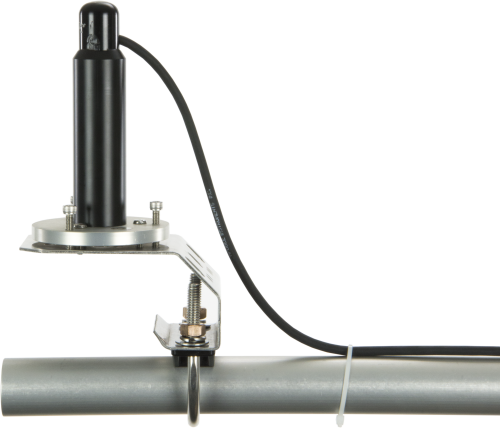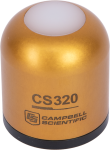This product is not available for new orders. We recommend ordering: SP230SS.

| Services Available |
|---|
Überblick
Das SP230 und das SP230SS Pyranometer von Apogee stehten auf einer erhöhten Basis und werden über eine 0,18 W -Heizung aufgewärmt, so dass auch bei frostigem Wetter Messungen möglich sind. Die Heizung benötigt nur 15 mA Strom, sie kann auch über eine kleinere Batterie mit Solarzelle betrieben werden, selbst bei kurzen Tagen und hohen Breitengraden, fern vom Äquator.
Auf dem Bild ist der CS230 auf einer 18356 Basisplatte und einer CM225 Halterung montiert.
Note: Der SP230 wurde im August 2018 durch den SP230SS ersetzt. Er hat eine Edelstahlverbindung, ein abnehmbares Kabel, andere Kabelfarben und die Seriennummer ist größer als 9898.
Lesen Sie mehrFunktionen und Vorteile
- Designed to prevent snow, frost, and dew accumulation
- Heater uses 1/80th of the power that other heated pyranometers use, making it ideal for remote battery-powered applications
- Measurement waveband of 360 to 1120 nm
- Compatible with most Campbell Scientific data loggers
- Dome-shaped head prevents water from accumulating on the sensor head
Bilder




Zugehörige Produkte
Technische Beschreibung
The SP230-L uses a silicon photovoltaic detector mounted in a cosine-corrected head to provide solar radiation measurements. It is calibrated against a Kipp & Zonen CM21 thermopile pyranometer to accurately measure sun plus sky radiation for the spectral range of 360 to 1120 nm. The SP230-L outputs a millivolt signal that Campbell Scientific data loggers can measure.
Note: Sensors calibrated to the 360 to 1120 nm spectral range should not be used under vegetation or artificial lights.
Kompatibel mit
Mounting
Accurate measurements require the sensor to be levelled using a #18356 levelling fixture. This levelling fixture incorporates a bubble level and three adjusting screws. The #18356 mounts to a crossarm using the CM225 mounting stand. The SP230 should be mounted away from all obstructions and reflective surfaces that might adversely affect the measurement.
Spezifikationen
| Light Spectrum Waveband | 360 to 1120 nm (wavelengths where response is 10% of maximum) |
| Measurement Range | 0 to 1750 W/m2 (full sunlight ≈1000 W/m2) |
| Heater | 780 Ω, 15.4 mA current drain, 185 mW power at 12 Vdc |
| Absolute Accuracy | ±5% for daily total radiation |
| Sensitivity | (0.2 mV/W/m2) |
| Calibration Factor | 5 W/m2/mV |
| Cosine Response | ±5% at 75° zenith angle; ±1% at 45° zenith angle |
| Temperature Response | -0.04 ±0.04% per °C |
| Long-Term Stability | < 2% per year |
| Operating Temperature Range | -40° to +70°C |
| Relative Humidity Range | 0 to 100% |
| Diameter | 3.15 cm (1.24 in.) |
| Height | 12.75 cm (5.02 in.) |
| Weight | 142.0 g (5.01 oz) with 2 m (6.56 ft) cable |
Dokumente
Handbücher
FAQs für
Number of FAQs related to SP230: 1
-
Because of the loss of IR radiation, nearly all thermopile instruments typically have a negative offset. This offset is most easily visible at night-time, when a small negative value is read instead of zero. This same offset is present during the daytime, but it is not as visible because of the large solar signal.
Another common issue involves leveling an instrument. Leveling a thermopile instrument can cause errors in the direct beam component because the cosine response is not correct. These errors are more notable when the sun is close to the horizon because the angle is so shallow.

